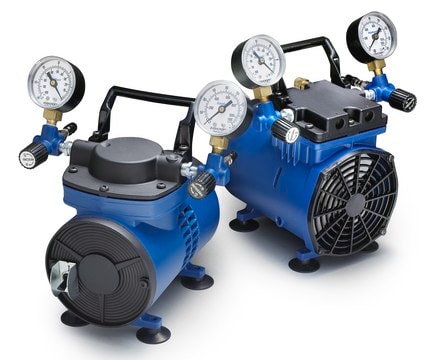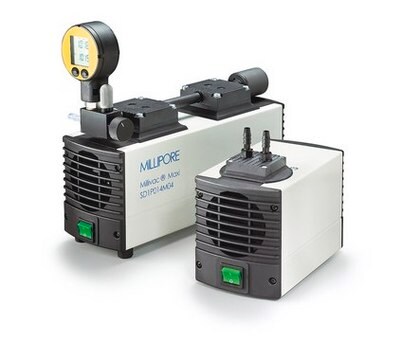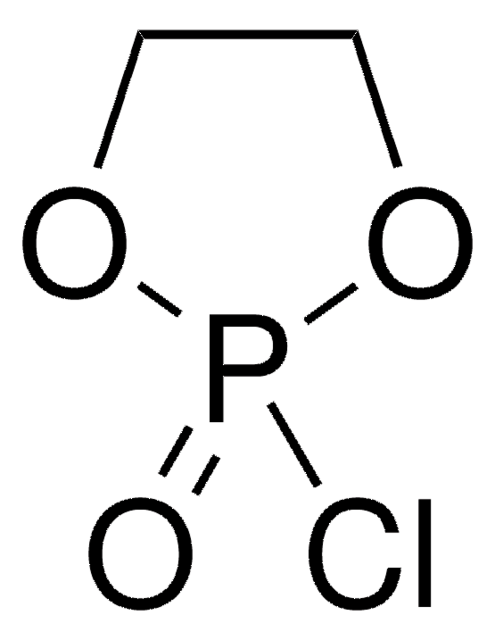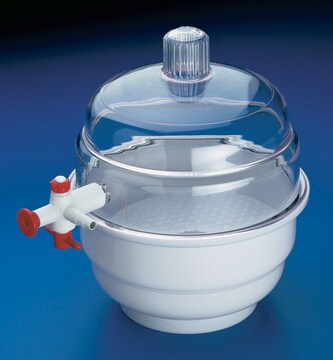939625
Ethyl ethylene phospholane monomer

Synonyme(s) :
2-Ethoxy-1,3,2-dioxaphospholane 2-oxide, Ethyl ethylene phophate
About This Item
Produits recommandés
Forme
liquid
Niveau de qualité
Couleur
colorless
Température de stockage
−20°C
Chaîne SMILES
O=P1(OCCO1)OCC
InChI
1S/C4H9O4P/c1-2-6-9(5)7-3-4-8-9/h2-4H2,1H3
Description générale
Application
- Polymer synthesis: This monomer is used as a building block to synthesize biodegradable and biocompatible polyphosphoesters
- Nanocarrier development: Polymers synthesized from the ehtyl ethylene phospholane monomer create efficient nanocarriers for drug delivery and gene therapy, including for use in targeted and controlled release of therapeutics
- Hydrogel fabrication: This monomer can be used to develop polymers for tissue engineering applications, offering scaffods with excellent biocompatibility and potential for cell growth and regeneration
Caractéristiques et avantages
- Biocompatible and biodegradable: Through ring opening polymerization (ROP) of ethyl ethylene phospholane monomer, it is possible to synthesize polymers used in biomedical applications that are cell compatible and degrade over time
- Thermoresponsive behavior: In aqueous solutions, this monomer exhibits a lower critical solution temperature (LCST), making it responsive to changes in temperature, expanding its potential in controlled release system
- pH-responsive degradation: The resulting polymers can be designed to degrade at specific pH levels, allowing for targeted release of encapsulated substances
- Water soluble: This monomer enables the synthesis of water-soluble polymers, facilitating their incorporation into various aqueous formulations The biomedical research grade ethyl ethylene phospholane monomer opens the door to advanced biomaterials and provides researchers and developers with a powerful tool to create biocompatible and customizable polymers for a range of applications in biomedical research.
Produit(s) apparenté(s)
Code de la classe de stockage
10 - Combustible liquids
Classe de danger pour l'eau (WGK)
WGK 3
Point d'éclair (°F)
Not applicable
Point d'éclair (°C)
Not applicable
Faites votre choix parmi les versions les plus récentes :
Certificats d'analyse (COA)
Désolés, nous n'avons pas de COA pour ce produit disponible en ligne pour le moment.
Si vous avez besoin d'assistance, veuillez contacter Service Clients
Déjà en possession de ce produit ?
Retrouvez la documentation relative aux produits que vous avez récemment achetés dans la Bibliothèque de documents.
Notre équipe de scientifiques dispose d'une expérience dans tous les secteurs de la recherche, notamment en sciences de la vie, science des matériaux, synthèse chimique, chromatographie, analyse et dans de nombreux autres domaines..
Contacter notre Service technique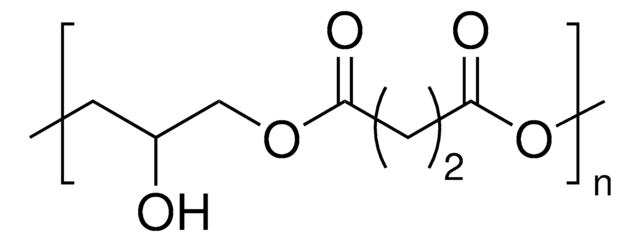
![N-[2-(2-Hydroxyethoxy)ethyl]methacrylamide contains MEHQ as inhibitor](/deepweb/assets/sigmaaldrich/product/structures/303/296/5f2feb4f-b8ea-4219-b495-50d1f731c523/640/5f2feb4f-b8ea-4219-b495-50d1f731c523.png)

